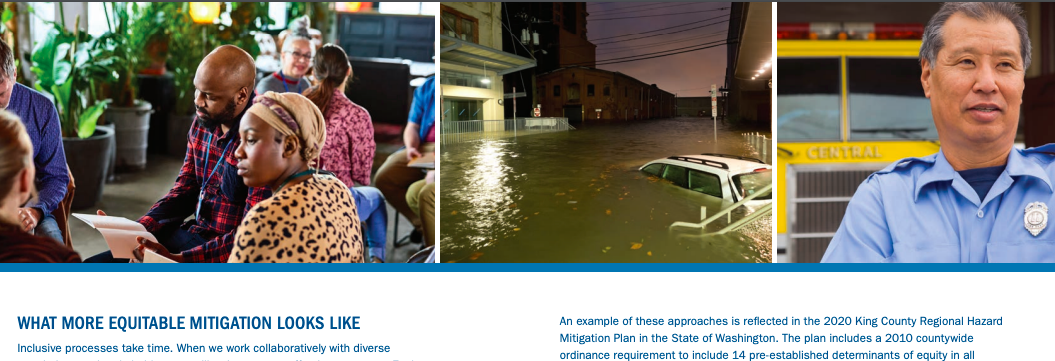
Online toolkit providing resources and guidance on integrating equity into climate resilience planning.
Equitable Community Resilience Adaptation Toolkit
Visit the Equitable Community Resilience Adaption Toolkit here
Overview
The Equitable Community Resilience Adaptation Toolkit provides resources and guidance on integrating equity into climate resilience planning. The toolkit uses a four-step framework for creating and implementing equitable community resilience plans. This framework, as well as the resources shared within each step, are intended to be a resource for people who represent, work, or volunteer for a municipal or county government.
This free, online toolkit was assembled by the New Jersey Department of Environmental Protection’s Bureau of Climate Resilience Planning, Michael Baker International, Inc., and Tetra Tech, Inc. Even though this resource focuses on New Jersey, communities and individuals in other states can apply this framework, and use the provided resources, to inform their climate resilience planning efforts.
Navigating the Toolkit
Each of the four key steps of the framework are broken down further into subcomponents.
To navigate through the toolkit, first, users can click on the step they are interested in to access a dropdown menu with each sub step; for example, 1. Initiate & Engage.

Next, they can click on the sub-step they are ready to explore to navigate to the associated webpage; for example, Build the Team.

Then, users can explore the information and resources provided under each heading on the webpage; for example, Establish Project Leadership, Planning Team, Identifying Stakeholders, and Advisory Committees.
Framework
Below is a breakdown of the framework and key resources provided in the Equitable Community Resilience Adaptation Toolkit.
1. Initiate and Engage
The purpose of this step is to educate users about how to create a planning team and engage advisory committees and community stakeholders.
Resources to highlight from this section include:
- An evaluation toolkit that walks through the process of creating an engagement plan.
- Sample engagement questions that are for gaging public awareness and the relevance/importance of climate resistance strategies in that area,
- A Seat at the Table online training guides expanding representation in the planning team and incorporating other perspectives in the community, adding emphasis on the vulnerable populations.
2. Understand your Vulnerability
This step focuses on understanding the community’s vulnerabilities to be able to find relevant solutions to address future climate impacts and prepare for updating Master Plans.
Resources to highlight from this section include:
- An evaluation tool kit that goes in-depth on collecting, interpreting, and applying environmental data to provide opportunities that engage and empower socially vulnerable populations in project planning.
- A Vulnerability Assessment Matrix is useful as a self assessment tool for determining the climate vulnerabilities within the community.
- DEP Guidance on using Sea-Level Rise Projections is useful for helping towns select sea-level projections.
3. Develop a Strategy
The goal of this step is to develop a Resilience and Adaptation Action strategy that addresses community climate vulnerabilities.
Resources to highlight from this section include:
- The toolkit offers guidelines on creating an equable solution, climate health, and a planning worksheet that helps with brainstorming for climate solutions.
- A matrix lists strategies that either address the effects or the impacts of climate change.
- FEMA’s guide to expanding migration is a workshop that lists the types of land use tool and it links to how the tool works and can be utilized.
4. Track your Progress
This final step focuses on two key aspects of implementing any plan – funding and monitoring. The first part of this step is to create a funding and finance plan. A list of federal, state, and local grant and financing opportunities relevant to hazard migration. The federal opportunities are applicable beyond New Jersey’s borders. While the state and local opportunities may not be relevant outside of New Jersey, they may have similar options in the state and community the user is working in.
The second part of this step includes considerations for monitoring tools and approaches as well as next steps.
Resource Feature
Guide to Expanding Mitigation: Making the Connection to the Coast

The Federal Emergency Management Agency’s (FEMA) Guide to Expanding Mitigation: Making the Connection to the Coast is one of the resources featured in this toolkit. This guide further explores what equity means and what it looks like to integrate equity into hazard mitigation planning. The Guide to Expanding Mitigation includes additional resources about equitable and inclusive planning.
Check out this toolkit for more in-depth information and resources about integrating equitability in your climate resilience planning.




